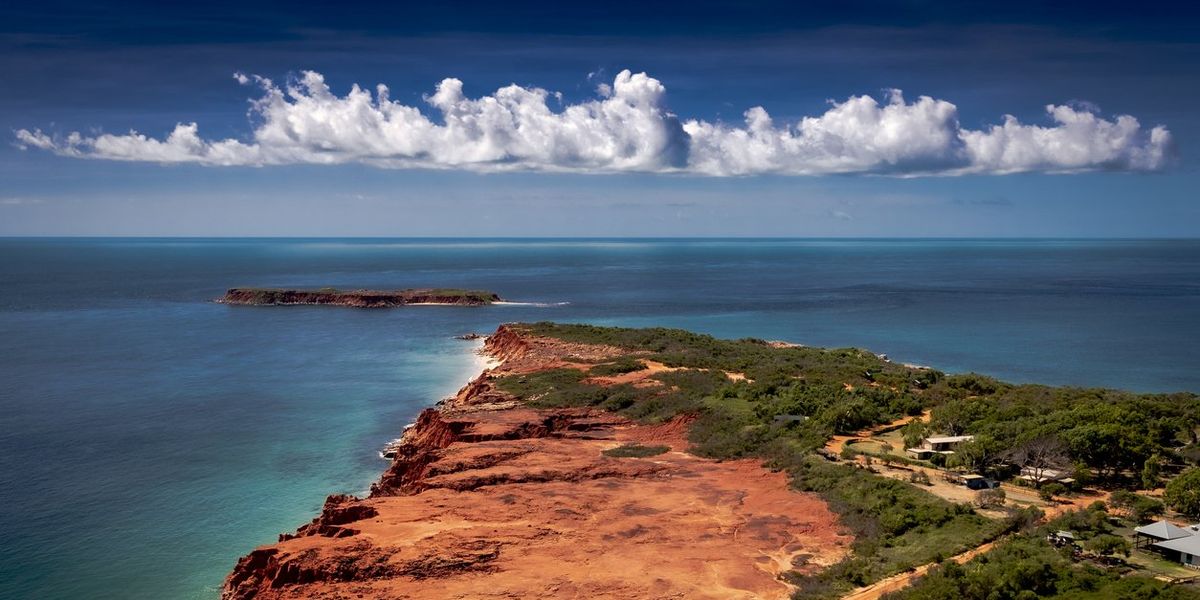A landmass that once housed up to half a million people has been discovered off the coast of northern Australia.
The now submerged continental shelf was a vast, habitable landscape for much of the past 65,000 years, covering some 390,000 square kilometers – an area larger than New Zealand
The scientists who made the landmark discovery, led by Kasih Norman of Griffith University in Queensland, said the “complex landscape” that existed on Australia’s Northwest Shelf was “unlike any other landscape found on our continent today.” is”.
And yet the people who lived there spoke similar languages and created similar styles of petroglyphs as those who lived in the surrounding areas, the team announced in a press release.
These regions, once connected by the shelf, still exist today: Western Arnhemland in the north and Kimberley in the northwest.
Norman and her colleagues explained that when the last ice age ended about 18,000 years ago, global warming caused sea levels to rise, drowning out parts of the world’s continents.
This split the supercontinent Sahul into New Guinea and Australia, and cut off Tasmania from the mainland.
A map showing where the continent of Sahul once lay(Kangaole via Wikipedia)
Australia’s now submerged continental shelf was thought to be ecologically unproductive and therefore largely ignored by its original indigenous communities.
“But mounting archaeological evidence shows that this assumption is incorrect,” the researchers wrote.
“Many large islands off the coast of Australia – islands that were once part of the continental shelf – show signs of occupation before sea levels rose.”
But before Norman and her team conducted their research, archaeologists had only been able to speculate about the nature of these pre-Ice Age submerged landscapes, and the size of their populations.
But the newly published findings have filled in many of the missing details – showing that the Northwest Shelf was a lush realm, with archipelagos, lakes, rivers and even a large inland sea.
“The region contained a mosaic of habitable freshwater and saltwater environments,” they said. “The most striking of these features was the Inland Sea of Malita.”
According to archaeologists, this sea already existed for 10,000 years (27,000 to 17,000 years ago), with an area of more than 18,000 square kilometers.

According to models by Norman and her team, the Northwest Shelf could have supported between 50,000 and 500,000 residents at various times over the past 65,000 years.
The population is thought to have reached its peak at the height of the last ice age, about 20,000 years ago, when the entire plateau was dry land.
To draw their conclusions, the researchers projected beyond sea level onto high-resolution maps of the ocean floor.
They found that low sea levels exposed a vast archipelago of islands on the northwestern shelf of Sahul, stretching 500 kilometers towards the Indonesian island of Timor.
This archipelago formed between 70,000 and 61,000 years ago and remained stable for about 9,000 years.
“Thanks to the rich ecosystems of these islands, people may have migrated from Indonesia to Australia in stages, using the archipelago as stepping stones,” the scientists noted.
“During the descent to the last ice age, the polar ice caps grew and sea levels fell by up to 120 meters. This completely exposed the shelf for the first time in 100,000 years.”

However, at the end of this ice age, rising sea levels drowned the plateau, forcing residents to flee as water invaded once productive landscapes.
“Retreating populations would have been driven together as available land became smaller,” the experts wrote, noting that this resulted in the appearance of “new rock art styles” in both the Kimberley and Arnhem lands.
“Rising sea levels and the drowning of the landscape are also recorded in the oral histories of First Nations people from across the coastal belt,” they added, noting that these histories have likely been passed down for “more than 10,000 years.” .
“This latest revelation of the complex and complicated dynamics of First Nations people responding to rapidly changing climates adds increasing weight to calls for greater Indigenous-led environmental stewardship in this country and elsewhere,” they concluded their statement.
“As we face an uncertain future together, deep indigenous knowledge and experience will be essential for successful adaptation.”
The full article about their findings can be found at Quaternary Science Reviews.
Have your say about our news democracy. To help this article rise in the Indy100 rankings, click the upvote icon at the top of the page
